
ATPlite 1glow F, 100 ml
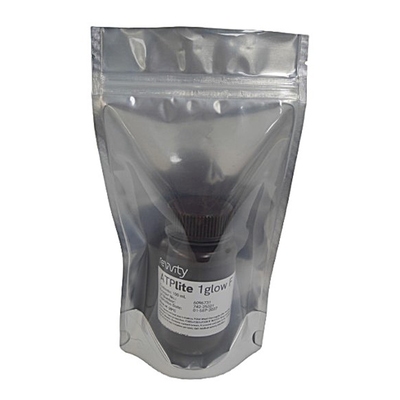
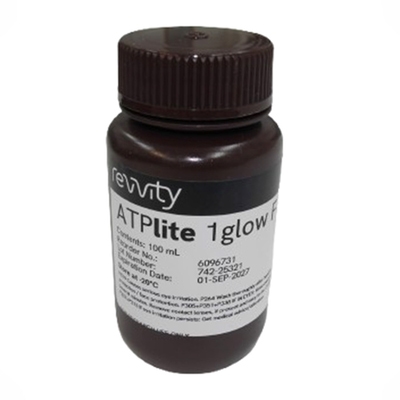
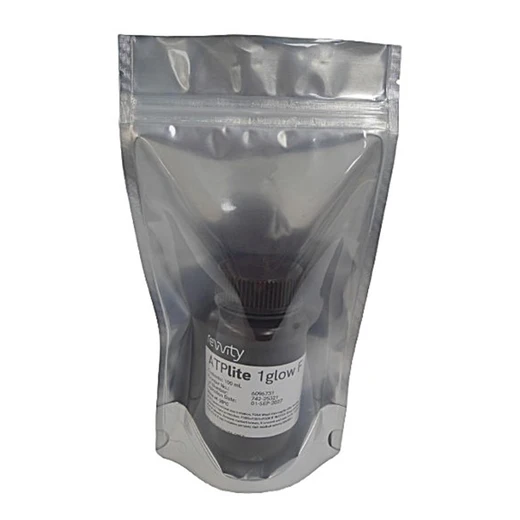
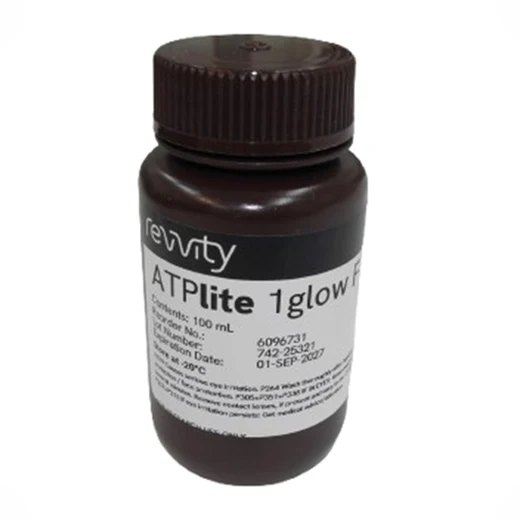



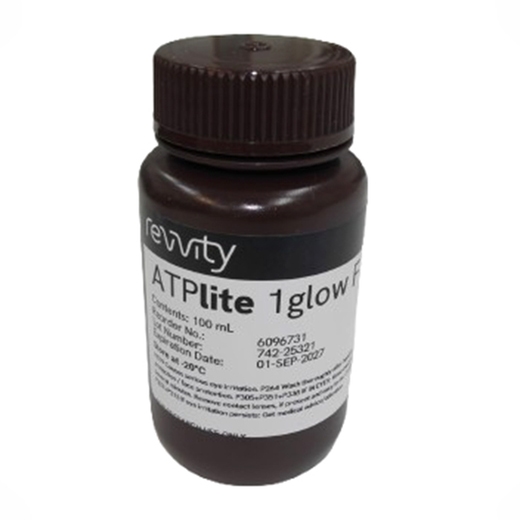


| Feature | Specification |
|---|---|
| Application | Cell Viability |
| Assay Points | 1,000 pts, 96-well: 4,000 pts, 384-well |












Product information
Overview
ATP is a marker for cell viability due to its presence in all metabolically active cells. ATP concentration declines rapidly when cells undergo necrosis or apoptosis, and so monitoring ATP is a good indicator of cytotoxic, cytostatic and proliferation effects.
Our ATPlite 1glow F, in a ready-to-use liquid format, is an advanced luminescence assay that detects ATP in mammalian cells using firefly luciferase. As ATP levels correlate with cell viability, this assay is a powerful tool for assessing cytotoxicity and proliferation. Engineered for signal stability, this luminescence based technology provides a broad dynamic range and can reduce interference from colored compounds that may affect absorbance-based viability assays.
The ATPlite 1glow F reagent utilizes a homogenous "add-mix-read" format, eliminating wash and separation steps to simplify workflows in high-throughput applications. It features enhanced signal stability with a long signal half-life, offering greater flexibility for batch processing. This single reagent measures ATP changes in both 2D and 3D cell culture.
Specifications
| Application |
Cell Viability
|
|---|---|
| Assay Points |
1,000 pts, 96-well: 4,000 pts, 384-well
|
| Automation Compatible |
Yes
|
| Brand |
ATPlite 1glow
|
| Cellular or Signaling Pathway |
Autophagy
Cell Death
Cell Growth
Cytotoxicity
Necrosis
|
| Detection Modality |
Luminescence
|
| Format |
Microplates
|
| Protocol |
ready-to-use
|
| Signal Halflife |
> 3 hours
|
| Shipping Conditions |
Shipped in Dry Ice
|
| Unit Size |
100 mL
|
Resources
Are you looking for resources, click on the resource type to explore further.
ATPlite™ 1glow is an advanced luminescence assay that detects ATP in mammalian cells using firefly luciferase. ATP levels...


How can we help you?
We are here to answer your questions.






























